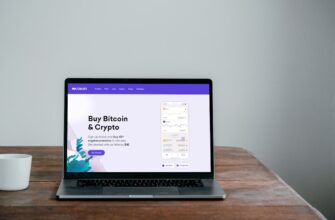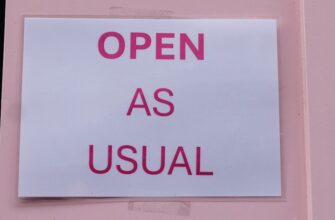- Cryptocurrency Holders List: Your Key to Understanding Market Dynamics
- Why Cryptocurrency Holder Lists Matter
- Where to Find Cryptocurrency Holder Lists
- How to Analyze a Cryptocurrency Holders List
- Important Considerations and Limitations
- Cryptocurrency Holders List FAQ
- Beyond the Basics: Leveraging Holder Data
Cryptocurrency Holders List: Your Key to Understanding Market Dynamics
For investors and analysts navigating the volatile world of cryptocurrency, understanding who holds a particular token is crucial. A cryptocurrency holders list provides invaluable insights into market concentration, potential price movements, and the overall health of a project. This guide explores what holder lists are, where to find them, how to interpret the data, and why they matter for your crypto strategy.
Why Cryptocurrency Holder Lists Matter
Knowing the distribution of a cryptocurrency goes beyond simple curiosity. Here’s why accessing a holder list is essential:
- Assess Decentralization: A highly concentrated holder list (e.g., a few “whales” owning most tokens) signals higher volatility risk and potential market manipulation. A broad distribution is often healthier.
- Identify Whale Activity: Tracking large holders (whales) can provide early signals of potential buying or selling pressure that might impact the price.
- Gauge Community Strength: A large number of unique holders often indicates strong community adoption and belief in the project’s long-term value.
- Evaluate Tokenomics: Holder data helps verify token distribution claims made in whitepapers (e.g., team allocations, treasury holdings, airdrops).
- Detect Potential Scams: Projects with suspiciously concentrated holdings or rapid large transfers to unknown wallets warrant caution.
Where to Find Cryptocurrency Holder Lists
Accessing holder data depends on the blockchain the token operates on. Here are the primary sources:
- Blockchain Explorers (The Source):
- Ethereum (ETH, ERC-20 tokens): Etherscan is the gold standard. Search for the token contract address to see the full holders list, sorted by balance.
- Binance Smart Chain (BSC, BEP-20 tokens): BscScan provides similar functionality for BSC-based tokens.
- Solana (SOL, SPL tokens): Solscan and Solana Explorer offer holder information for Solana tokens.
- Others: Polygon (Polygonscan), Avalanche (Snowtrace), etc. Each major chain has its dedicated explorer.
- Crypto Data Aggregators:
- CoinMarketCap: Provides a “Holders” tab for many major tokens, showing the top holders and distribution charts (often sourced from explorers).
- CoinGecko: Similar to CoinMarketCap, offering holder distribution data and charts for supported tokens.
- Dedicated Analytics Platforms (Advanced):
- Nansen, Arkham Intelligence, Dune Analytics: These platforms offer deeper insights, labeling wallets (e.g., exchanges, funds, individuals), tracking flows, and providing sophisticated analytics beyond basic holder lists. Often require subscriptions.
How to Analyze a Cryptocurrency Holders List
Simply finding the list is step one. Interpreting it effectively is key. Focus on these metrics:
- Top Holders: Who are the largest addresses? Are they known exchanges (Binance, Coinbase), the project’s treasury, team wallets, or anonymous entities? Large exchange holdings are normal; large anonymous holdings need scrutiny.
- Concentration Ratios:
- Top 10/20/50/100 Holders: What percentage of the total supply do they control? High concentration (>40-50% in top 10) is a red flag.
- Gini Coefficient: A statistical measure of inequality (0 = perfect equality, 1 = perfect inequality). Lower is generally better for decentralization.
- Number of Unique Holders: A steadily growing number suggests increasing adoption. Stagnation or decline can be negative.
- Holder Changes Over Time: Are whales accumulating or distributing? Are new small holders entering? Tools like Nansen excel at tracking this.
- Balance Distribution: Charts showing the spread of holdings (e.g., how many hold <1 token, 1-10, 10-100, etc.) reveal the community structure.
Important Considerations and Limitations
While powerful, holder lists have limitations:
- Anonymity: Blockchain addresses are pseudonymous. You often don’t know the *real-world identity* behind a wallet, only its activity.
- Exchange Omnibus Wallets: Large holdings labeled as exchanges represent *many* individual users’ funds pooled together. Don’t mistake this for a single whale.
- Accuracy of Labels: Analytics platforms try to label wallets, but these aren’t always perfect or up-to-date.
- Wallet Splitting: Large holders can split funds across many wallets to hide their true concentration.
- Not Investment Advice: Holder data is one analytical tool, not a crystal ball. Combine it with fundamental and technical analysis.
Cryptocurrency Holders List FAQ
Q1: Is it legal to look up cryptocurrency holder lists?
A: Yes. Blockchain data is public and transparent by design. Accessing it via explorers or aggregators is perfectly legal.
Q2: Can I see the exact identity of a wallet holder?
A: Generally, no. Blockchains use pseudonymous addresses. While sophisticated analysis or voluntary disclosure (e.g., project teams) can sometimes reveal identities, most wallet owners remain anonymous.
Q3: How accurate are the holder counts on sites like CoinMarketCap?
A: They are generally accurate as they source data directly from blockchain explorers. However, remember the limitations: exchange wallets count as one holder but represent thousands of users, and some wallets (like burn addresses) might be included.
Q4: What’s the difference between a “holder” and an “address”?
A: They are often used interchangeably, but technically, one “holder” (person or entity) can control multiple “addresses” (wallets). The holder count usually refers to the number of unique addresses holding a non-zero balance.
Q5: Are there free ways to get detailed holder analytics?
A: Basic holder lists and top holder data are free on blockchain explorers (Etherscan, BscScan) and aggregators (CoinMarketCap, CoinGecko). Advanced analytics (wallet labeling, flow tracking) typically require paid subscriptions to platforms like Nansen or Arkham.
Q6: Can holder data predict price movements?
A: It can provide *signals*, not guarantees. For example, significant accumulation by known smart-money wallets might indicate bullish sentiment, while large transfers to exchanges by whales might signal potential selling pressure. Always use it alongside other analysis.
Q7: Where can I find holder lists for NFTs?
A: The same principle applies! Use NFT-specific marketplaces (OpenSea, LooksRare – check the “Details” or “Items” tab for a collection) or blockchain explorers. Look for the NFT contract address.
Beyond the Basics: Leveraging Holder Data
Advanced users leverage holder lists for:
- Tracking VC/Seed Investor Unlocks: Monitor wallets associated with early investors to anticipate potential sell pressure when tokens unlock.
- Identifying Smart Money: Platforms like Nansen track wallets with a history of profitable moves. Following their activity can be insightful.
- Due Diligence for New Projects: Scrutinizing the initial token distribution and early holder activity is crucial before investing in new launches.
Conclusion
A cryptocurrency holders list is a fundamental tool for anyone serious about understanding the market. By knowing where to find this data and how to interpret key metrics like concentration, whale activity, and holder growth, you gain a significant edge in assessing project health, identifying potential risks, and making more informed investment decisions. Remember to consider the limitations of anonymity and exchange holdings, and always combine holder analysis with comprehensive research. Start exploring the holder lists of your favorite tokens today – the insights waiting on the blockchain are powerful.








